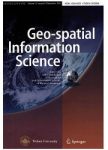Formal Definition of a User-Adaptive and Length-Optimal Routing Graph for Complex Indoor Environments
Formal Definition of a User-Adaptive and Length-Optimal Routing Graph for Complex Indoor Environments作者机构:Chair of GIScienceDepartment of GeographyUniversity of Heidelberg
出 版 物:《Geo-Spatial Information Science》 (地球空间信息科学学报(英文))
年 卷 期:2011年第14卷第2期
页 面:119-128页
核心收录:
学科分类:081603[工学-地图制图学与地理信息工程] 081802[工学-地球探测与信息技术] 07[理学] 08[工学] 070503[理学-地图学与地理信息系统] 0818[工学-地质资源与地质工程] 0705[理学-地理学] 0816[工学-测绘科学与技术]
基 金:the Chair of GIScience University of Heidelberg and the Klaus-Tschira Foundation (KTS) Heidelberg
主 题:3D indoor navigation 3D indoor routing city modelling formal definition routing graph buildings
摘 要:Car routing solutions are omnipresent and solutions for pedestrians also ***,public or commercial buildings are getting bigger and the complexity of their internal structure has ***,the need for indoor routing solutions has *** prototypes are available,but they still lack semantically-enriched modelling (e.g.,access constraints,labels,etc.) and are not suitable for providing user-adaptive length-optimal routing in complex *** approaches consider simple rooms,concave rooms,and corridors,but important characteristics such as distinct areas in huge rooms and solid obstacles inside rooms are not considered at all,although such details can increase navigation *** formally defining a weighted indoor routing graph,it is possible to create a detailed and user-adaptive model for route *** defined graph also contains semantic information such as room labels,door accessibility constraints,***,one-way paths inside buildings are considered,as well as three-dimensional building parts,e.g.,elevators or stairways.A hierarchical structure is also possible with the presented graph model.



